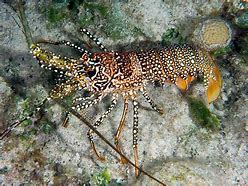Lobster



Lobsters are invertebrates that belong to the crustacean family. There are 49 lobster species that can be found in the oceans all over the world. Lobsters also inhabit fresh and brackish water. Out of 49 lobster species, 33 are commercially exploited.
In the past lobsters were so plentiful that they were often used as fertilizer and during the 18th century, lobsters were considered to be food for poor people (such as servants and prisoners). Today, lobsters are served as a delicacy, which leads to a constant decrease in their number in the wild. Around 200 000 tons of lobsters are caught each year. Despite this, lobsters are still not listed as endangered species.
Depending on the species, lobsters vary in size from 0.8 to 3.25 feet in length. Most species are somewhere in between. The largest recorded lobster ever caught weighed about 44 pounds (20 kilograms) and was over three feet long.
Just like in other Arthropods, the body of the lobster is protected by an outer skeleton called an “exoskeleton” (shell). The shell cannot expand in size as the lobster grows and it sheds periodically. Lobsters without shells are very vulnerable and they usually hide until a new shell is formed. This process is called molting and it happens once per year. Lobsters have the unique ability to regenerate lost body parts. If a lobster loses a claw, for example, it can regrow a new one over time. The regenerated claw may not be identical to the original, but it serves the same purpose. The lobster has a long tail composed of seven pieces with a fan-like tip.
Deep-sea lobsters are blind. Other species have compound eyes. They cannot see clear images but can detect movement even at night. They have a keen sense of smell and taste, which helps them locate food. They also have small hairs on their legs and antennae that allow them to detect movements and vibrations in the water.
Lobsters mainly eat meat, such as fish, mollusks, worms, and crustaceans. They also consume algae and other types of sea vegetation. Most people think that lobsters are red in color. They are actually brown or olive-green, with reddish shades. They turn red after cooking because heat destroys all pigments except red.
Lobsters engage in a fascinating mating ritual. Male lobsters attract females by excreting urine into the water, which contains pheromones to attract mates. During a mating period, the female becomes vulnerable because she throws away her shell. After a week of mating, a new shell will develop and the female will have a large number of eggs deposited inside her body. The eggs will remain inside her body for 9 to 12 months, and then on the outside underneath her tail for another 9 to 12 months until they are finally released.
A low percentage of released eggs reach maturity. Out of 10 000 eggs, only 10 will survive until adulthood. A lobster reaches the size of an adult after about 7 years of constant growth. Lobsters in the wild can survive up to 100 years. The oldest recorded lobster was estimated to be around 140 years old. A huge percentage of lobsters live much shorter because they end up in the fishing nets much earlier.
Lobsters have several natural predators, including other lobsters, octopuses, eels, and large fish such as cod. To protect themselves, lobsters have a tough exoskeleton, and they can quickly dart backward to escape danger.
While lobsters are generally solitary creatures, they do interact with each other in certain situations. They have complex social behaviors, such as aggressive displays, courtship rituals, and dominance hierarchies.